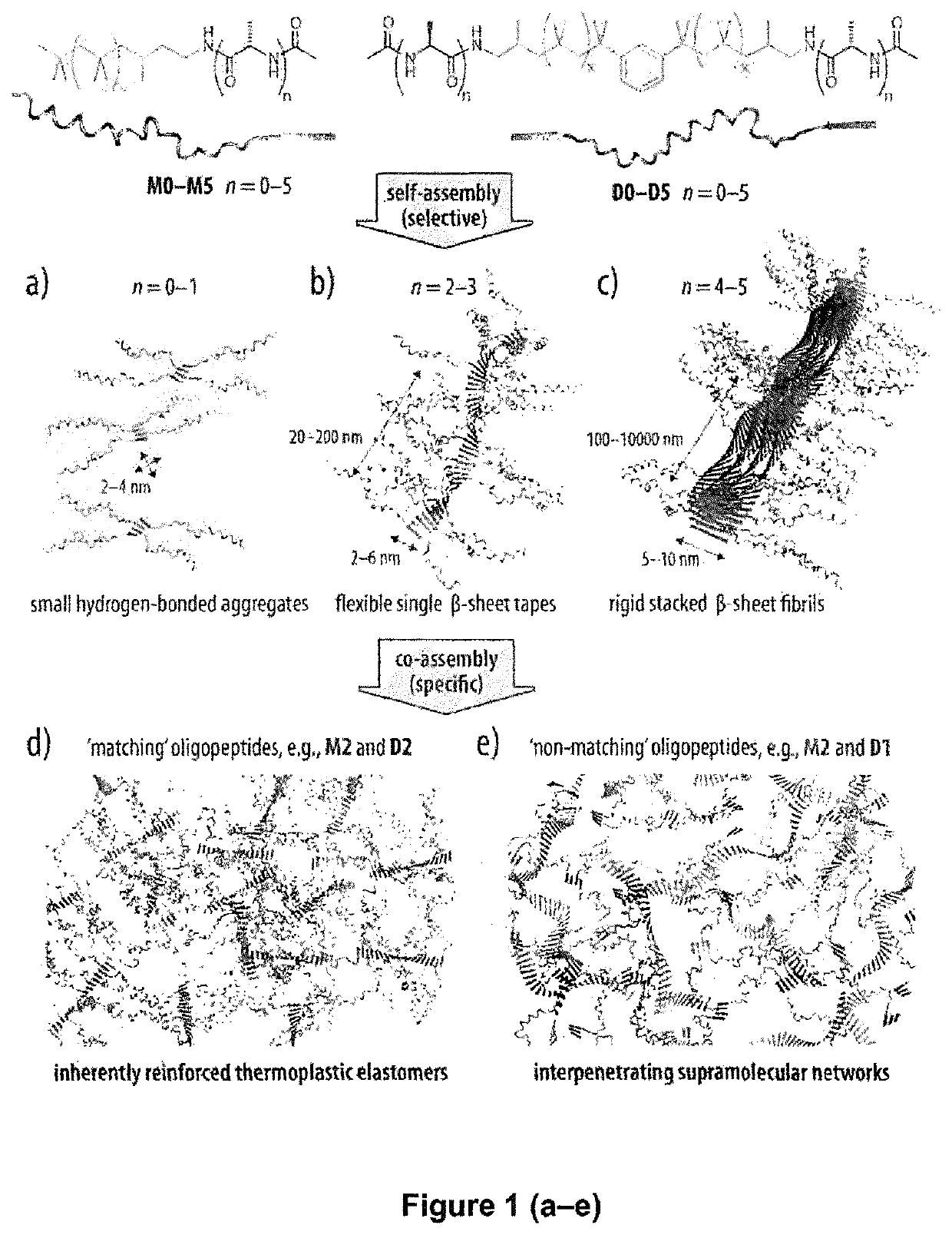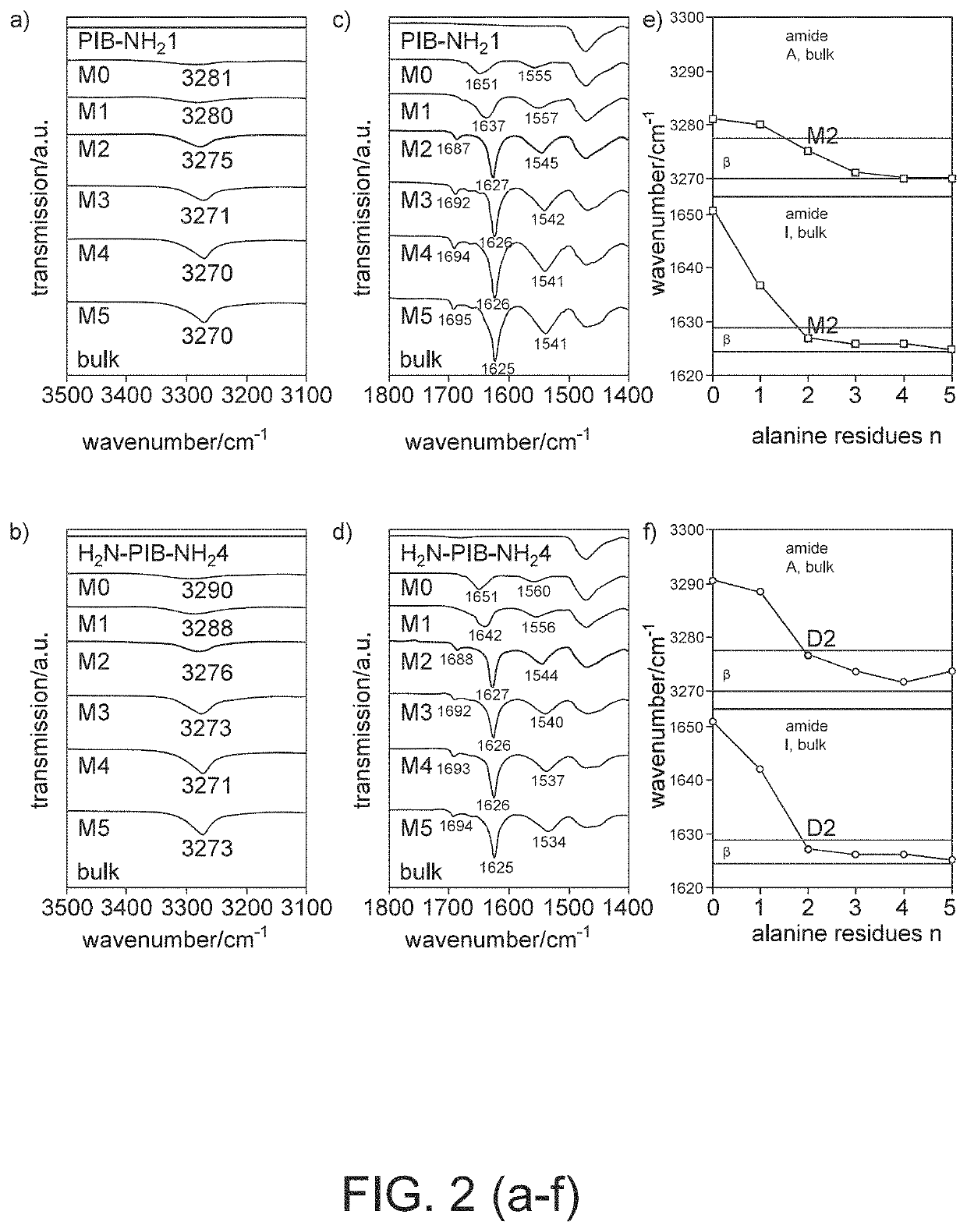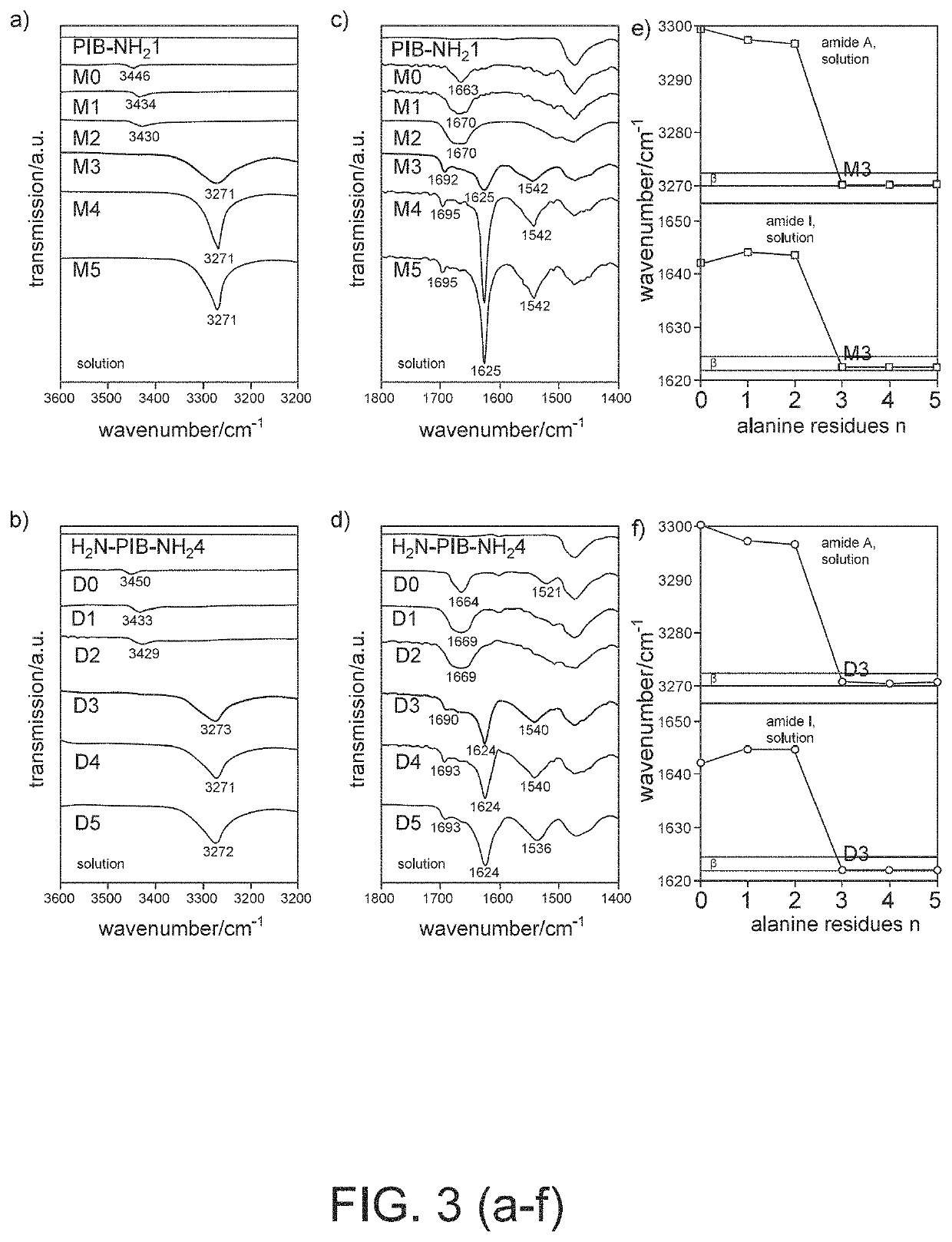Blends of oligopeptide terminal polyisobutylene or polystyrene
a technology of oligopeptides and terminal polyisobutylenes, applied in the direction of coatings, etc., can solve the problems of damage healing, inability to form stable materials, and insufficientness of others, and achieve excellent energy dissipation and damping properties, improved mechanical moduli, and low creep
- Summary
- Abstract
- Description
- Claims
- Application Information
AI Technical Summary
Benefits of technology
Problems solved by technology
Method used
Image
Examples
Embodiment Construction
[0074]As shown in the drawings and referring in particular to FIG. 1:
[0075]FIG. 1a-c) Schematic illustration of the selective self-assembly of the monofunctional oligo (L-alanine)-modified poly(isobutylene)s M0-M5 (n=0-5; x≈20) and the corresponding difunctional derivatives D0-D5 (n=0-5; x≈20) into small hydrogen-bonded aggregates, flexible single β-sheet tapes, or rigid stacked β-sheet fibrils. The coexistence of these nanostructures in blends of molecules with different oligopeptide termini resulted in d) ‘inherently reinforced thermoplastic elastomers’ or e) ‘interpenetrating supramolecular networks’.
[0076]Differently from all previous examples of supramolecular networks, the aggregation of the oligopeptide-terminated polymers that constitute the basis of the present invention that comprise chiral and monodisperse (molecularly defined) oligopeptides as hydrogen-bonded ligands results in a highly selective formation of small hydrogen-bonded aggregates from compounds with short oli...
PUM
| Property | Measurement | Unit |
|---|---|---|
| glass transition temperature | aaaaa | aaaaa |
| lengths | aaaaa | aaaaa |
| temperatures | aaaaa | aaaaa |
Abstract
Description
Claims
Application Information
 Login to View More
Login to View More - R&D
- Intellectual Property
- Life Sciences
- Materials
- Tech Scout
- Unparalleled Data Quality
- Higher Quality Content
- 60% Fewer Hallucinations
Browse by: Latest US Patents, China's latest patents, Technical Efficacy Thesaurus, Application Domain, Technology Topic, Popular Technical Reports.
© 2025 PatSnap. All rights reserved.Legal|Privacy policy|Modern Slavery Act Transparency Statement|Sitemap|About US| Contact US: help@patsnap.com



